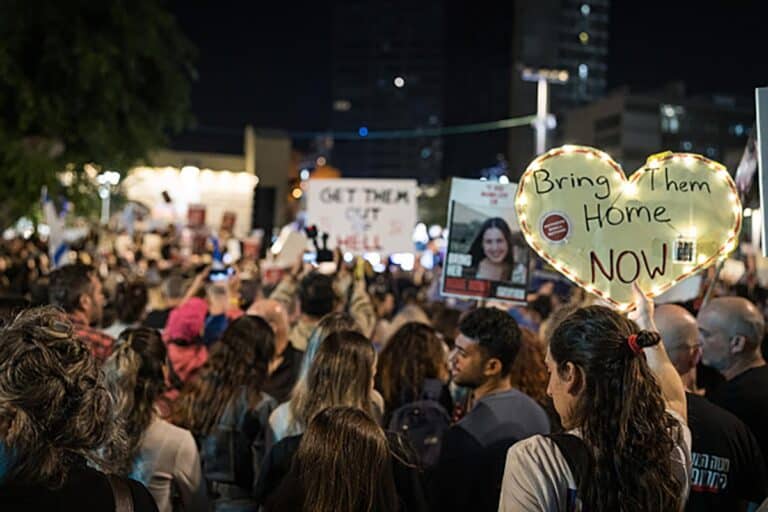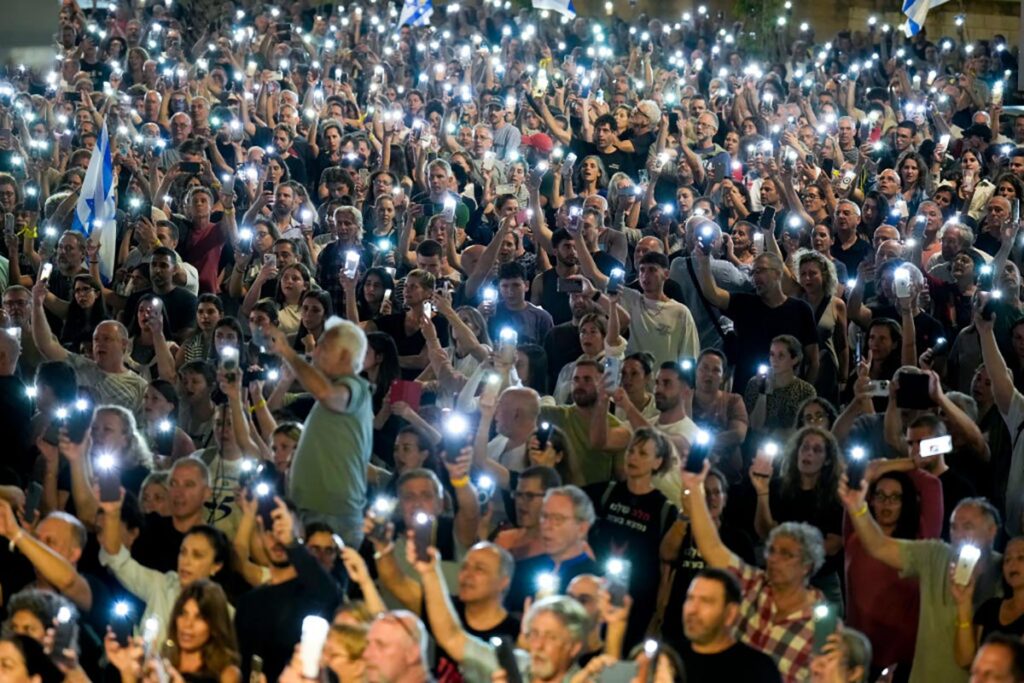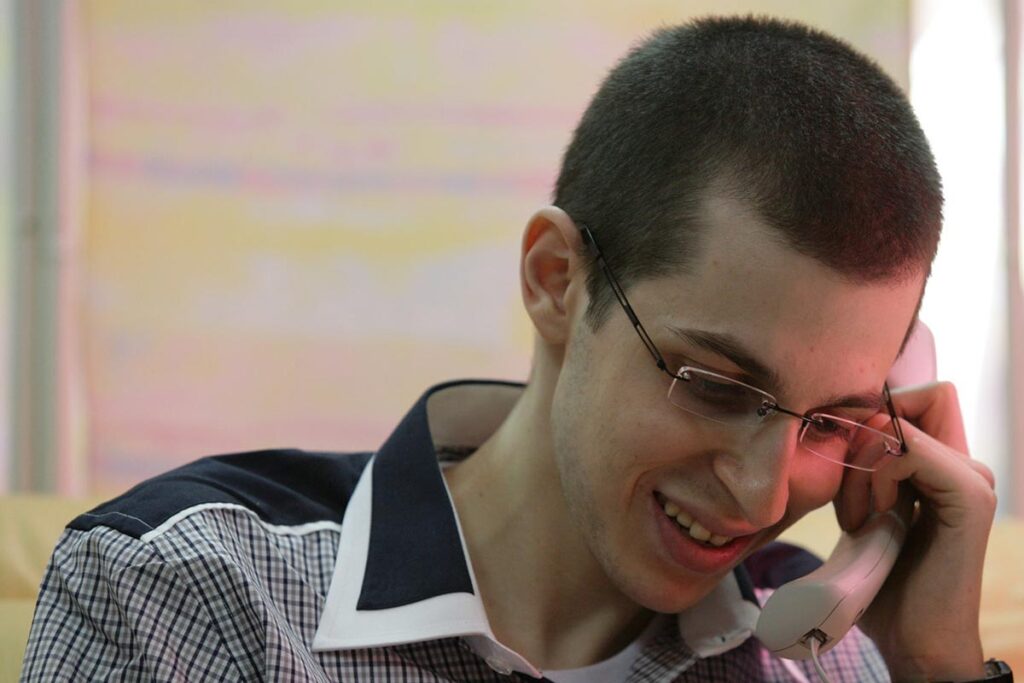
Hamas released eight Israeli hostages on Thursday on the seventh day of a ceasefire and hostage deal with Israel. However, the temporary truce broke down early Friday morning after Hamas refused to release 10 more women hostages.
During the seven-day truce, Hamas released 105 civilians — including 81 Israelis — in exchange for 210 Palestinian prisoners.
There are now at least 130 hostages remaining inside Gaza, including roughly 17 women and two children, according to data from the Israeli prime minister’s office.

Read on to understand the ceasefire and hostage deal, how we got here, how Israelis are reacting and what happens next.
What exactly is in the deal?
In the agreement, announced last Wednesday, Hamas agreed to release a minimum of 50 Israeli women and children hostages in exchange for a four-day ceasefire.
Israel agreed to release 150 Palestinian prisoners — one for every Israeli hostage released — and allow 300 aid trucks to enter Gaza each day. The truce was then extended by two days.
The temporary ceasefire and hostage releases began last Friday after a previous announcement said the deal would go into effect on Thursday.
Prime Minister Benjamin Netanyahu’s office claimed that the deal also included a clause for the Red Cross to visit the remaining hostages in Gaza. However, the Red Cross said it was not aware of such plans.
Hamas will release the hostages over the course of four days. After the initial release, Israel will release Palestinian prisoners — specifically, women and minors under 18 who have not been convicted of murder but who have been charged with attempted murder, aggravated assault and other crimes.
How was the agreement reached?
Qatar, the U.S., and Egypt mediated the Israel-Hamas hostage deal. Here’s what happened. On October 20, Qatar brokered a preliminary deal that led to Hamas releasing two hostages, an American mother and daughter.
That initial deal convinced the U.S. to get involved. A Biden administration official stated that their release “gave us some confidence that Qatar really could deliver.”
Although the U.S. had been pushing for humanitarian pauses, it became evident after President Biden’s wartime meeting with Netanyahu in Israel that such pauses would only be possible if hostages were released. Read more about President Biden’s wartime visit to Israel.
Then, on October 25, White House Mideast czar Brett McGurk discussed a potential plan of phased hostage releases with Qatar’s prime minister.
The U.S. demanded that Hamas provide proof of life and identifying information of the women and children to Israel through Qatar.
Hamas later told Qatar that they would commit to releasing 50 women and children but failed to provide identifying information.
This setback, plus the launch of Israel’s ground invasion of Gaza on October 27, put the negotiations on hold.
Two weeks later, after pressure from Qatar and the U.S., Hamas finally agreed to provide identifying information.
This past Sunday, McGurk met with Egyptian intel chief Abbas Kamel who helped close the final details of the agreement. On Wednesday morning, the Israeli cabinet approved the deal with a vote of 35 to 3 in favor.
The Knesset then met and voted to approve the agreement. Despite previous opposition to the deal, the Religious Zionist party ultimately voted in favor of it.
The three Knesset members who voted against it were from National Security Minister Itamar Ben-Gvir’s ultranationalist Otzma Yehudit faction.
How are Israelis reacting to the deal?

Reactions from the Israeli public are mixed. While there is a strong desire for the hostages’ release, many view the deal as unfair because Israel is exchanging three prisoners for each hostage.
Many are also concerned that the four-day ceasefire will allow Hamas to reorganize its terrorist army, hindering Israel’s efforts to destroy it.
Additionally, many fear that the released Palestinian prisoners will carry out further terror attacks, just as some of the terrorists exchanged for Gilad Shalit have since their release.
In 2011, before Shalit’s exchange for over 1,000 terrorists, 80% of Israelis backed the deal, and his return was widely celebrated.

However, 80% of the released prisoners returned to terrorist activities, including Yahya Sinwar, the Hamas leader who orchestrated the October 7 massacre.
To learn more about the history of Israeli prisoner exchanges and the challenging dilemma they pose for Israeli society, read here.
Some also object to the Israeli government’s decision to send daily trucks of fuel into Gaza, arguing that Hamas is diverting this fuel from humanitarian uses to support terrorist operations.
Read more: What’s happening at Al-Shifa and Rantisi hospitals in Gaza?
Israelis are experiencing bittersweet emotions for another reason as well — they are relieved for the 50 hostages who will be freed, yet still painfully aware of the 180 who will not return home.
Since the onset of the war, continuous protests have taken place across the country, calling on the government to rescue the hostages.
Israeli Prime Minister Benjamin Netanyahu has met with hostages’ families multiple times, assuring them of Israel’s commitment to securing the release of their loved ones.
How is Israel preparing for the hostages’ release?

The IDF has been briefed on protocols for receiving the kidnapped children. This includes reassuringly introducing themselves, offering physical assistance like help with walking, and using the child’s name to create a sense of security and familiarity.
Additionally, Israel has demanded that mothers and children being held captive must be released together.
They have been instructed not to answer any questions about children’s parents or families and to assure them they are being brought home to Israel.
Hostages have been assigned to different hospitals throughout the country, depending on their age and condition. They will receive thorough medical evaluations with pediatricians treating children and female staff treating women.
Additionally, social workers and psychiatrists are already assigned to all of the hostage families, ready to provide mental health support in the event that their loved ones return home.
What’s next?
The release of additional hostages may extend the ceasefire with one additional day added for every 10 hostages freed, up to a maximum of 10 days.
Hezbollah said it will also adhere to the ceasefire (even though it wasn’t part of the negotiations). However, the Iran-backed Houthis in Yemen — which have fired several missiles and drones at Israel since the outbreak of the war — said they will not uphold a ceasefire.
Meanwhile, Prime Minister Netanyahu, Defense Minister Yoav Gallant, Chief of Staff Herzi Halevi and other Israeli officials have insisted that the war will continue post-ceasefire.
Despite anticipated increasing international pressure, they firmly assert that after the ceasefire, the war could even expand to the south of Gaza.
In a press conference on Wednesday night, Netanyahu stated, “The war continues. We will continue until we complete all of our goals [to eradicate Hamas].”
Read more: 8 inspiring moments in Israel from this past week
Originally Published Nov 22, 2023 05:20PM EST
